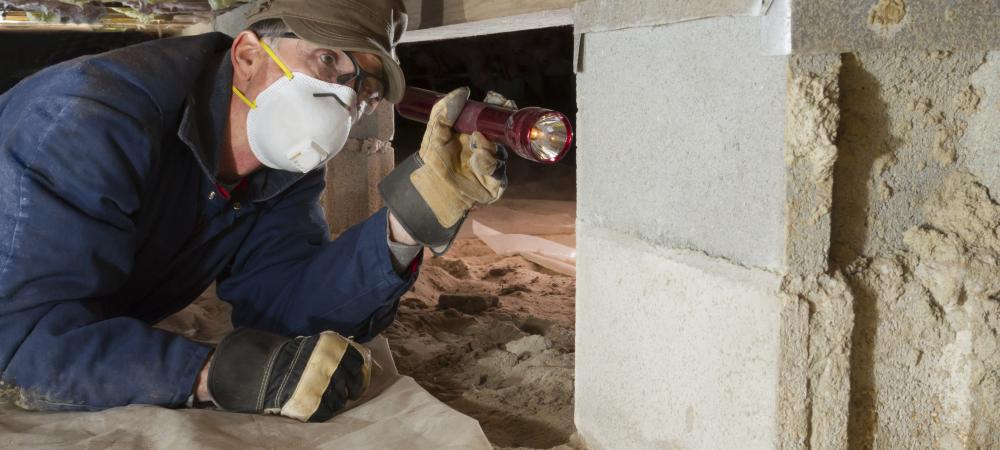Signs of a Termite Infestation in Roxbury, New Jersey

When it comes to protecting your property in Roxbury, New Jersey, it is important to be aware of the common signs of a termite infestation. These tiny pests can cause significant damage to wooden structures and compromise the structural integrity of your home or business. By recognizing the signs early on, you can take prompt action and prevent further damage. In this article, we will explore some of the common signs that may indicate a termite infestation in your area. From mud tubes on foundation walls to winged insects and discarded wings, being vigilant and proactive is key to safeguarding your property. Stay tuned as we delve into these signs and provide you with the necessary knowledge to identify a potential termite problem.
Mud Tubes on Foundation Walls
Mud tubes on foundation walls are a key sign of a termite infestation in Roxbury, New Jersey. Subterranean termites, the most common type of termite in the area, construct these tubes as a means of transportation and protection. These tubes are made of dirt, mud, frass (termite droppings), and debris, and are often found on both interior and exterior walls of structures.
The presence of mud tubes indicates active termite activity and should be taken seriously by property owners. Termites use these tubes to travel from their nests in the soil to their food sources inside wooden structures. They create these tubes to shield themselves from harsh weather conditions and other threats while they navigate between their colony and the structure they are infesting.
To identify mud tubes, homeowners should inspect their foundation walls, particularly near the ground level. The tubes will often lead to entry points in the structure, such as cracks or gaps in the foundation or walls. If mud tubes are discovered, it is crucial to take immediate action and contact pest control professionals specializing in termite management.
Wood Damage/Structural Damage
Wood damage and structural damage are common signs of a termite infestation in Roxbury, New Jersey. Termites feed on wood from the inside, leaving a thin layer of paint or timber on the surface. This can cause the wood to become weak and compromised.
One noticeable sign of termite damage is a hollow sound when tapping or knocking on the wood. Due to their feeding habits, termites eat away at the wood from the inside, leaving only a thin layer intact. As a result, the wood may sound hollow or papery when tested for its integrity.
In addition to the hollow sound, other signs of termite damage include visible holes in the wood, maze-like patterns on the surface, and swollen wood with a mildew or mold scent. These signs indicate that termites have been actively feeding on the wood and compromising its structural integrity.
Winged Insects or Swarmers Around Your Home
In Roxbury, New Jersey, homeowners may come across various types of winged insects or swarmers around their homes. These flying insects are often an indication of a termite infestation. It is crucial to properly observe and identify these insects to determine if they are termites.
Common types of winged insects or swarmers found in Roxbury include:
- Subterranean Termites: These termites are responsible for the majority of termite infestations. They have straight antennae, equal-sized wings, and a broad waist.
- Drywood Termites: These termites have straight antennae, equal-sized wings, and a narrow waist. They tend to infest dry wood and can be found in attics and walls.
- Dampwood Termites: These termites have long, straight antennae, unequal-sized wings, and a broad waist. They typically infest damp or decaying wood.
To properly identify if these flying insects are termites, it is essential to examine their physical characteristics. Termites have straight antennae, whereas flying ants have bent antennae. Additionally, termites have equal-sized wings, while flying ants have wings of different lengths.
Discarded Wings Near Doors/Windowsills
When it comes to identifying a termite infestation, one important sign to look out for is discarded wings near doors and windowsills. Discarded wings are a clear indicator of termite swarmers, which are winged termites that are on the hunt for new places to establish colonies. To properly identify discarded wings and determine if they are from termites, there are several steps you can take:
- Carefully inspect doors and windowsills: Start by examining these areas closely for any signs of discarded wings. Look for small, translucent wings that are roughly the same size. Termite wings are typically longer than their bodies.
- Differentiate between termites and ant wings: While termites and ants both have wings, termites have wings of equal length, while ant wings are usually different lengths. Termites also have straight antennae, as opposed to the bent antennae of flying ants.
- Consult with pest control professionals: If you suspect that the discarded wings are from termites, it is advisable to consult with pest control experts who can confirm the presence of an infestation and recommend the appropriate treatment.
Discarded wings near doors and windowsills are a definite cause for concern and should be addressed promptly. Don't hesitate to take action if you suspect a termite infestation, as these pests can cause significant damage to your property.
Hollow-Sounding Wood or Damaged Sheetrock
One common sign of a termite infestation in Roxbury, New Jersey is hollow-sounding wood or damaged sheetrock. Termites have a voracious appetite for wood and feed on it from the inside out. As a result, they leave behind a thin layer of paint or timber, making the wood sound hollow or papery when tapped upon.
Termites also create nests in wall voids, where they mix macerated wood with soil, excrement, and saliva to build their colonies. This nesting behavior can lead to damaged sheetrock. As termites tunnel through the walls, they weaken the structural integrity of the sheetrock, causing it to become brittle, discolored, or even crumble in severe cases.
If you notice hollow-sounding wood or damaged sheetrock in your home, it is crucial to act promptly. Contacting termite pest control professionals in Roxbury, New Jersey, such as Gilmer Termite & Pest Control, can help confirm the presence of a termite infestation and provide effective treatment options to eliminate the pests.
Inspect Areas Prone to Infestations Regularly
Regularly inspecting areas prone to termite infestations is crucial for homeowners in Roxbury, New Jersey. Being proactive in detecting early signs of termite activity can prevent further damage to your property.
Start by examining wooden structures such as decks, fences, and porches around your home. Termites are attracted to cellulose-rich materials, making these areas vulnerable to infestation. Inspect for any signs of damage, such as hollowed-out wood, mud tubes, or discarded wings.
Foundation walls are another area to focus on. Termites can gain entry through cracks or gaps in the foundation, making it essential to inspect for any visual signs of termites or their mud tubes. Windowsills, especially those made of wood, should also be examined thoroughly as termites may target them for their cellulose content.
Regular inspections allow you to catch termite activity early, enabling prompt action to eliminate the pests before they cause significant damage. If you discover signs of termites during your inspections, it is crucial to contact a termite exterminator in Roxbury, New Jersey, such as Delsea Termite & Pest Control. They have the expertise and treatment options necessary to effectively eliminate termites and protect your property from further infestation.
Remember, being proactive in inspecting areas prone to termite infestations in Roxbury, New Jersey, can save you time, money, and stress by preventing significant damage to your home.
